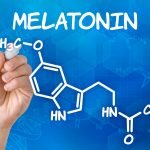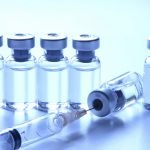Mind the Gap: The Value Proposition in Naturopathic Medical Education
Education
David J. Schleich, PhD
There are more naturopathic students and graduates at this end of the decade than there were at the beginning. That’s a fact.
Recently, I spoke with a focus group of freshly minted grads, for whom the national licensing and entry-to-practice board exams (NPLEX) are looming, alongside 6 NDs with an average clinical practice experience of 15 years. Their conversation, feedback, and impressions are summarized below.
We had 3 questions in the hopper in the 4 hours we spent together.
- Would you do it again (that is, study naturopathic medicine)?
- How is it really going, where you are in the continuum?
- What’s actually going on out there, do you think?
Doing the Numbers
Over the course of a single generation, the number of students either headed into or enrolled in CNME-accredited naturopathic programs has grown impressively. Another fact: there are just over 2500 students in process right now, down from over 2700 two years ago. What is fascinating about these hundreds and hundreds of mostly young people is that their choice doesn’t slide snugly into the usual higher education choices in America, or into the comfort zone of joining the well-beaten path of the professions.
The cost of an ND degree and the prevailing levels of income are out of whack compared to medical degrees in biomedicine (such as the MD, DO, NP, PA, and related credentials). Even so, comparisons across primary care professions provide little evidence of exactly synonymous motivation for choosing naturopathic medicine, as contrasted with allopathic counterparts.
The so-called “graduate premium” [that is, the differences in average earnings among these professions, after accounting for tuition, ancillary fees, and opportunity cost such as income, foregone while studying] boils down to the ROI (return on investment) conversation we often hear these days. Overall, the ROI for higher education was quite robust between 1980 and 2000 here in the United States, baseline years for students coming into matriculation age between 2000 and 2018. However, our “naturopathic medical education” graduate premium is flawed because of unequal access to employment and because of the slower uptake of private practice for ND graduates in many American states.
Despite the friendly news in recent months about labor market conditions (unemployment and underemployment rates) improving for recent college graduates, especially in the first quarter of 2018, our focus group respondents broadly pointed to other motivators for their commitment to their 4-year degrees. Their observations are really inspiring. But first, let’s do a few numbers. They are very telling.
A recent study (University of Minnesota, 2018) – which harmonizes microdata from the monthly US labor force survey, and more specifically, in the material consulted, folds in analysis from the current population survey (IPUMS CPS) including demographic information, employment data, program participation, and related information – revealed that among about half of the occupations examined (including health professionals), there were higher shares of graduates today than 50 years back. Note, though, that among these occupations, real wages have fallen. (Economist, 2018)
In fact, the Economist further reports that many graduates end up doing work that used to be done by non-graduates. Within this phenomenon, there is the reality that degree completion in naturopathic programs has more content volume, more robust assessment, and more complex entry-to-practice requirements than 50 years ago. Even so, arithmetically, there have been more naturopathic students in the queue than ever. Why do they do it, given the “graduate premium”? Are they minding that gap?
Now, let’s survey some of the qualitative data, comprised of statements made by our focus group. Herewith, a distillation of comments.
They are very telling, too.
- Would you do it again?
Overwhelmingly, yes. Although we were disappointed at first by the unexpectedly significant inclusion of didactic and clinical information from biomedicine. We are also aware of the profession’s multi-decade drift into biomedicine theory and practice, and understand that this was probably inevitable given the rise in interest among orthodox providers, manifesting as “functional,” “holistic,” and “integrative” medicine. The profession needs to “label itself better” and to “identify how it is different” and to do these things immediately, since we are losing identity, turf, and momentum. Worrying is that the key agencies of the profession aren’t communicating often enough with students and docs in practice and/or working in the field in some form, about what they’re focused on. Glad for the digital presence of the AANP and the AANMC and the INM in our lives. Happy for the choice I (we) made, but worried about making a living after NPLEX. PAs and NPs make more money than I (we) might, although their professional boundaries are tighter. There is so much I (we) can do to influence patients around true prevention (not some weird version of “more tests, sooner”).
- How is it really going right now, where you are in the continuum?
Current students:
I (we) got worried when we saw attending and primaries default to pharmaceuticals so much. Too rare for attending and primaries to prescribe nature-cure solutions. Is there training for our teachers to be teachers? Wish our professors wrote more books and articles. Worried that our teachers have given up on our traditions. Everybody is in some kind of rush to diagnosis. Patients are in a hurry too, in that they don’t like it that foundational therapies like hydrotherapy or nutrition are labor-intensive and take willpower. Actively participating in the healing process is hard for patients to do because they are so conditioned to passivity by the monetized system out there. We are doing okay, but the volume and pace of content delivery is bruising. We don’t practice what we preach about balance and being present. I (we) figure that medical school has to be hard, and it is. Worried about debt.
Recent grads:
I (we) have more options now than setting up my own clinic. Setting up on our own is so expensive and iffy. But, there are lots of jobs showing up, if you look or if your school has a good data/info referral service. There are jobs out there in integrative clinics, for supplement companies, as part-time teaching. Money is not great, but it will get better, I (we) think. Awful that grads setting out in unlicensed states get hassled by the MDs all the time. Wish that the AANP could get licensing everywhere so we can just get going and not have to watch our backs all the time. It’s great in Oregon and Vermont and Washington, where we’re better known as primary care. No real money in nature-cure, except in rare instances. More of us should get together and co-found multi-discipline naturopathic clinics. We should hire MDs and DOs who are attracted to genuine “holism.” That AIHM thing was annoying to see happen because those allopaths are trying to be us even though they don’t think like us. Anyway, have been working for 4 years now with an MD and a DO, and they’re great because they know more about what they don’t know because of me. Finally making progress on getting the loan down. Residencies don’t pay enough, but I (we) had one and I’m glad because it beefed up my confidence.
Longer-term grads:
The new grads default to pharmacy and parenteral therapies too much. Where has homeopathy gone, anyway? Once I (we) got traction, it grew steadily. I make 8 times more in year 10 than I did in my first 2 years. At first, I worked for a chiro, but then got my own space and paid myself; wish I had done that in the first place. The profession keeps talking about evidence – we need more evidence about what we’re doing, why we’re doing it, and how effective we are. Didn’t Bastyr start off getting more science into the art of our medicine? I (we) hate the confusion out there about how we’re different from the integrative MDs, who really only dabble in natural medicine. The MDs get going faster because the turnstiles aren’t closed to them. Amazing what grads can do these days that we couldn’t back in the day, because now they come out with not only their ND degree and license but also with grad credentials in nutrition, mental health, and more. It’s better now for grads, but not everywhere. The southwest is doing well, but I worry about grads in the southeast. Wouldn’t trade what I do for an MD’s job, ever. They’re scrunched by the HMOs, insurers, pharma, and SOCs [standards of care], which led nowhere, and really rotten iatrogenic data. No wonder so many MDs and DOs want to soften that reductionist reputation.
- What’s actually going on out there, do you think?
The allopaths are just moving in and taking our medicine; except that they’re hijacking it only to dumb it down into the same thing they have always been doing, which is rushing to diagnosis, hi-tech-testing everything to death, and not relying enough on their own intuition and training and their connection with the patient. We aren’t growing fast enough. We need more NDs in the field right now. What, we have 6000 out there and the allopaths have a million? More books, more articles, now. What the hell, that Davis wrote Wheat Belly and Perlmutter wrote Grain Brain; we should have done that because we have been doing that for decades and decades, and now they get the credit for being “integrative” and “holistic.” Bill Mitchell used to say, “It’s the gut, stupid” when I was a student in short pants. He was right, and we need more teachers like him, but teachers who write for the mass market as well as for medical school curricula. The AMA knows that we’re a far bigger threat to their control than the functional medicine docs, but the AMA knows that it’s all a matter of scaling and messaging. If we ever got those right, there’d be no stopping us. I know I can’t make as much money as the MD up the street, and that’s alright with me; what isn’t alright is that my lease costs are the same and the playing field is unfair. I care that my patients don’t get lassoed by opioids or stuck in endless tests and insurance pressure. I care that the mothers who come to our clinic don’t want to rush into medicalized birthing, and we can do a lot about that. We’re moving forward: gawd, half a dozen states in the family in the last decade alone. The southeast is a desert for naturopathic medicine. Our hats go off to the NDs in Florida, Georgia, Texas, and Louisiana. Gutsy. Are there any NDs in Mississippi, do you know? Why did that university in Baltimore drop its new ND program? Good grief, they had Beth Pimentel – what more could you want? She would have had 100 docs a year graduating in no time. Can’t we get into the Match? We’ve been talking about that since I started naturopathic school 35 years ago. What’s the hold-up? We need new schools everywhere; let’s start with New York, Ohio, Florida, Texas, and North Carolina. We’re here to stay, damn it.
Qualitative and anecdotal data do not a trend make
Or do they?
The summary of thematic, leitmotif feedback from our little focus group is indeed telling. Considered against the backdrop of actual information about potential careers in health care, the future is indeed friendlier than might appear on first blush. Minding the gap between expectations and where our grads land and thrive, is only good sense. In a culture where dental hygienists make more money than chiropractors, and physician assistants make 6 figures right out of the gate, and naturopathic physicians don’t even make it onto the Healthcare Occupations list in the Occupational Outlook Handbook (Bureau of Labor Statistics, 2018), we have a long way to go. However, doing the numbers and doing the data, qualitative or not, requires closer analysis. The reality is that the median annual wage for healthcare practitioners (including NDs) was at $64,770 a year ago, compared to the median annual wage for all occupations in the American economy, which is $37,690. (Bureau of Labor Statistics, 2018) The value proposition weighs well in our direction.
Other data in the gap may seem worrying, but on closer inspection, are not. If our focus group is any indication of morale and vigor, we are faring not badly, notwithstanding our numbers. Our students, their students, and their colleagues already in the field are indeed minding the gap. The value proposition for naturopathic medicine includes passionate conviction about doing something about a healthcare terrain in America which is not only massively expensive, but whose outcomes are not the definitive answer for the health of a wildly transforming planet where even the oil industry cannot expect to run the energy show much longer. One just has to do the environmental, health outcomes, and ethical math.
References:
Bureau of Labor Statistics. Occupational Outlook Handbook. Healthcare Occupations. Updated April 13, 2018. Available at: https://www.bls.gov/ooh/healthcare/home.htm. Accessed July 27, 2018.
IPUMS CPS. Current Population Survey Data for Social, Economic and Health Research. Available at: https://cps.ipums.org/cps/. Accessed July 27, 2018.
University of Minnesota. (February 1, 2018.) The economic returns to university. IPUMS, OECD, The Economist. Graphics available at: https://www.economist.com/graphic-detail/2018/02/01/the-economic-returns-to-university. Accessed July 27, 2018.
 David J. Schleich, PhD, is president and CEO of the National University of Natural Medicine (NUNM), former president of Truestar Health, and former CEO and president of CCNM, where he served from 1996 to 2003. Previous posts have included appointments as vice president academic of Niagara College, and administrative and teaching positions at St. Lawrence College, Swinburne University (Australia) and the University of Alberta. His academic credentials have been earned from the University of Western Ontario (BA), the University of Alberta (MA), Queen’s University (BEd), and the University of Toronto (PhD).
David J. Schleich, PhD, is president and CEO of the National University of Natural Medicine (NUNM), former president of Truestar Health, and former CEO and president of CCNM, where he served from 1996 to 2003. Previous posts have included appointments as vice president academic of Niagara College, and administrative and teaching positions at St. Lawrence College, Swinburne University (Australia) and the University of Alberta. His academic credentials have been earned from the University of Western Ontario (BA), the University of Alberta (MA), Queen’s University (BEd), and the University of Toronto (PhD).










